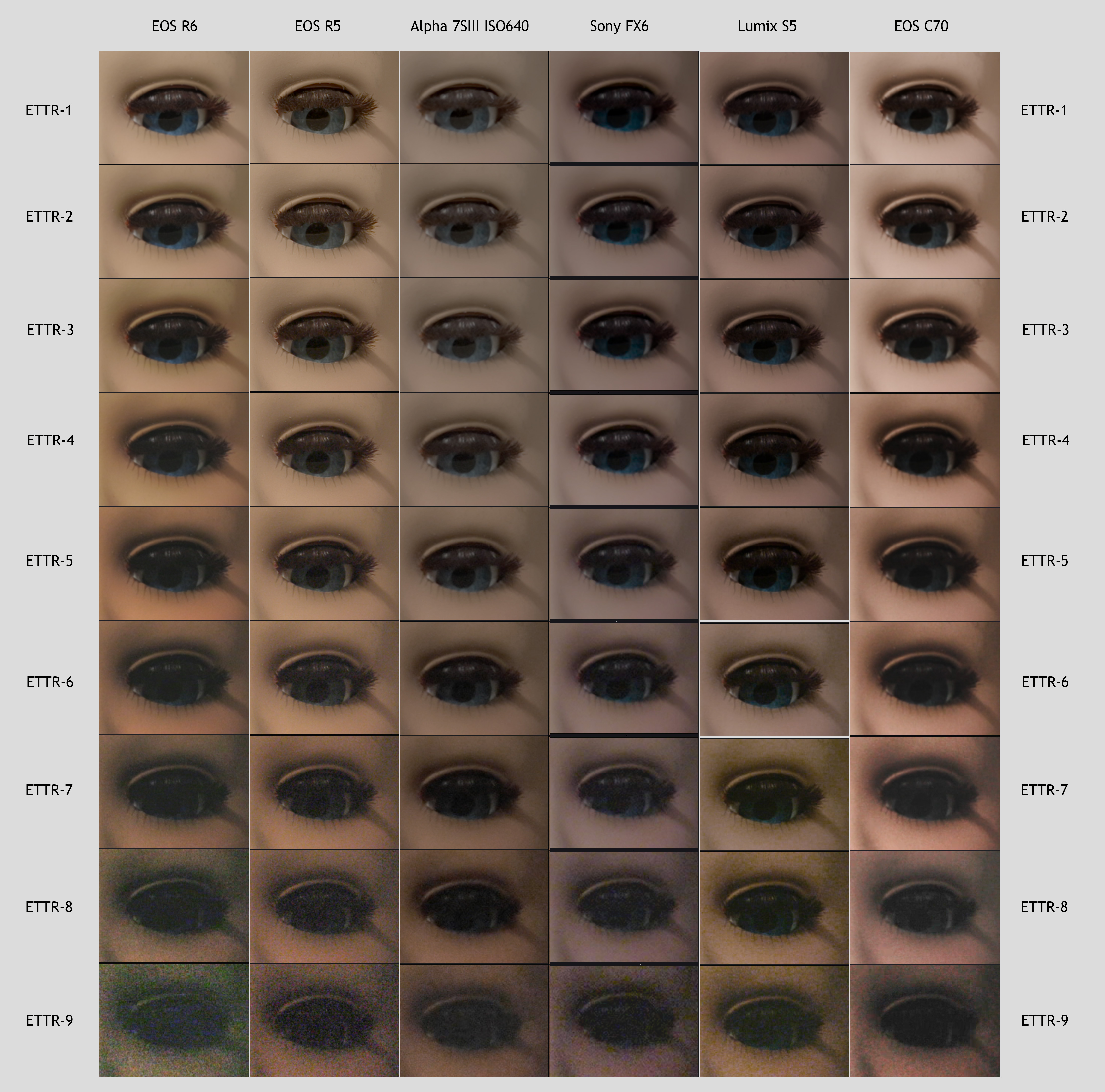
Jack Jin
-
Posts
36 -
Joined
-
Last visited
Posts posted by Jack Jin
-
-
Hi there, I'm looking for a non automatic working R16 right now, so that I can fit bigger lenses and adapters onto to camera, thank you.
Email: yj2711559@gmail.com
-
On 10/5/2023 at 4:56 PM, Boris bruno said:
Hey is it still available, I’m very interested
Hi unfortunetly it's not available anymore, wishing you goodluck on your search for the dragon.
-
Selling my beloved epic dragon set, has 1800 hours on it, and has given me amazing footage.
2950 USD for the Set, Shipping Worldwide (Shipping Included!)
RED Epic Dragon 6K Body (1800 Hours)
RED EF Mount
RED Side SSD Minimag Module
RED DSMC1 Side Handle
RED DSMC Fan 2.0
RED 480GB Minimag
Smallrig Top handle
Wooden Camera Quickback
V mount battery plateimages of the set: https://drive.google.com/drive/folders/1v4_sxnT3cgBZjNv2Eo7_ecCdGDrYf9aR?usp=sharing
-
 1
1
-
-
DM Sent!
-
On 3/14/2023 at 11:39 PM, Jaehyun Kim said:
hello
I want to talk about scanning 16mm 35mm film.
I scanned the film with a SCANITY SCNNER, LaserGraphics scanner, BLACKMAGIC SCANNER and ARRI SCAN.
However, the results seem to be the best for "scanity" flat log scans. The sharpness is good and the film texture is visible.
However, the result of working with LaserGraphics scanner is too soft.
Any idea why?
Please recommend which scanner can best preserve film quality.
Let us know your experience.
안녕하세요, 저도 한국에서 16mm 필름을 촬영하고 있습니다. 필름을 어느 필름랩으로 보내십니까? 미국으로 보내시겠습니까 아니면 일본의 TOGEN Filmlab으로 보내시겠습니까?
-
I'd say go with 2 perf and use the mini hawks for the anamorphic bokeh but spherical sharpness and speed.
-
Link to full short: https://www.youtube.com/watch?v=gYZHUB_uj0s&ab_channel=crappyfish123
I shot this project partially on ultra 16 and Vision 3 250D, and majority of it was shot on my Red Epic Dragon 6K. The lenses I used were mostly the Tamron 24-70 f2.8, and the Canon 24mm f1.4L ii for the early morning shots, with the Tokina 11-16 used for the sports shots. The compression ratio used was 6K HD and 5k HD at 6:1 to avoid artifacts. I pushed the Red to 6400 and 12800 in order to get better highlight latitude and also more noise and texture. Since I wanted a more gritty look to match the 16mm footage. The whole short film is shot at my classmate/actor's apartment and our highschool. Would love to know your guy's opnion and how I can further improve!
-
15 hours ago, Marta Teixeira P. Simoes said:
Hi Adam! I ended up not filming in this place.
But I did work recently on another project as a camera assistant where we faced a very similar situation. The cinematographer on the project opted to push one stop and the results were quite good. The film is not out yet but I'll try to post any stills if I get the chance!
Would love to see it!
-
13 hours ago, Duncan Brown said:
I spent a bunch of time scanning and reassembling a 1962 Gordon Enterprises catalog. (Is it their first one?) It's copyrighted, and normally I won't scan and post copyrighted material (I create copyrighted stuff myself!), but my research says this one has expired. The first copyright term would have expired in 1990, and I can find no evidence whatsoever that they renewed it. (Nor, in fact that they registered it originally, but they'd still get their 28 years just by marking it copyrighted.) If someone from Alan Gordon wants to take issue with this, please contact me!
Here is the monstrous, over 300MB, 600 dpi version:
http://backglass.org/duncan/16mm/misc/gordon_enterprise_motion_picture_equipment_catalog_1962.pdf
Here is the easier to download 100 dpi version, at 24MB, but a lot of the tiny print gets blurry at that resolution:
Fascinating stuff. I'm still slogging through the 130 pages myself.
I have some newer catalogs of theirs but I need to research the copyright status before I bother with all the scanning work. If I end up scanning them I'll post them here.
Duncan
Holy cow Alan Gordan has been around for that long? Crazy
-
8 minutes ago, Albion Hockney said:
The quality is very low resolution (youtube says 360p) so its hard to analyze it.
That said if this was shot around 2000 it would have almost definitely been shot on either Film, the Sony Cine Alta (f900), or maybe a Viper Film Stream... those were really the only options around then for high level production.
The sequence of the girl walking is shot in extreme slow motion and is lit artificially with a large light, which allowed them to underexpose the background, which is the key to that look.
the de saturated footage looks digital, could be something lower end then the F900...maybe a varicam? the look is simple to achieve I'd say through post color grading these days.
the f900 is a contender, but ism't the viper from 2004? Also, where there is bokeh i don't see any signature rainbow bokeh from the 3ccd on the f900, so I think it's film? But no idea what telecine/scanner/colorgrading suite could be on, the lighting is super interesting though!
-
This is a japanese music video shot around 2000, but the colors look very interesting and almost print film like and switches to a cold and desaturated palette midway through, any idea how and what equipment they could have achieved this look on? Thank you very much.
-
56 minutes ago, David Mullen ASC said:
color-timed IP for scanning to make a DCP and masters for home video
What scanner was used? Because the end result looks fantastic with amazing 60s/70s color depth.
-
7 hours ago, Janos Bozsonyik said:
Hi. Thanks for all the information. Where can I get the S1Alex??
https://www.emotivecolor.com/ I think the tungsten version is kinda meh imo, so i would recommend the daylight version only
-
1 hour ago, Antoine Pret said:
Thanks a lot for the detailed answer !
So in terms of highlight rolloff & film texture the S5 recorded externally would be better than the P4K without too much hassle in the grade ?
I do feel pretty confident when it comes to grading while not being a professional colorist but I really never use LUTS.
How bad is the rolling shutter on the two ?Highlight roll off on internal footage and external prores is actually quite nice, very similar to p4k with the highlight recovery on, but braw on the s5 does not have any highlight roll off in clipped areas, as all highlight roll off is built into the colorscience and processing of the camera, and braw does not use the camera's colorscience but rather blackmagic's V-log color science. I would highly recommend s1alex again, as it really does make grading so much easier, V-log is quite weird in it's hue and s1alex just makes an incredibly nice and filmic gamma curve since it converts the v-log to arri log c. The pocket 4k's rolling shutter and the s5's rolling shutter in 4k apsc crop are about the same, around 13ms, and the s5 in fullframe is at around 21-22ms. Which for reference, the a7m4 is at about 27-28ms and the pocket 6k is at about 19ms.
-
 2
2
-
-
It seems like the image quality has a very lo-fi and early digital point and shoot look, but the exposure ramp reminds of things that I've seen on film, it also seems like the footage was shot on a slow framerate then speed up. But I don't know how they would make the film look like this, is there any telecine or scanner that degrades the film image like this? Thank you.
-
 1
1
-
-
So as an owner of these two cameras, here are my thoughts:
First, the bmpcc4k right now is shooting blackmagic raw, and unfortuntely blackmagic raw is not true raw, it's partially debayered in camera, and for some reason on the p4k and p6k camera's braw is especially soft and mushy, i would say that the hd cinema dng from the bmpcc original is comparable to the p4k in braw. You really isn't getting the full 4k resolution out of the blackmagic raw files, especially due to their high frequency detail filters that eliminate fine details such as hair, fabric textures, small texts, etc. This was done as a way to denoise the footage in camera, and was sharpened as well, creating a mushy image, with a green fringing commonly present in the prores and blackmagic files on the pocket 4k post firmware 6.2, I originally thought that it was my lens's fault, but turned out it was braw, as the cdng stills did not have those green fringing.
Second, the bmpcc4k's colorscience is intresting, it's a lot easier to manually grade by hand in terms of getting a pleasing image, due to the fact that blackmagic seemed to have aimed for skintones instead of accurate primary colors. So even though the skintone is very healthy, the greens are very brown. And if you attempted to fix those greens in post, the afformentioned mushiness and green fringing becomes extremely obvious. I owned a lot of pocket 4k luts, like the p4k2alexa, p4kalex by emotive color, the buttery luts, and filmconvert nitrate. Which all aim to match the pocket to arri alexa or a cineon log film scan of different film stocks. But since the alexa has very vibrant greens, even though the color look great on the p4k2alexa and p4kalex, the mushiness and green fringing is exaggerated.
Third, I would say that the lowlight performance of the p4k, is about 0.66 stop noisier then the s5, and the exposure lattuide to be a stop lower then the s5 when having highlight recovery turned on (the s5 does not have highlight recovery in blackmagic raw), due to the fact that s5 is better then any camera under 10000 dollars when it comes to usable dynamic range and latitude
 . Speaking of which I do own a blackmagic video assist 12g to record both prores and blackmagic raw on the lumix s5. The lumix s5's blackmagic raw is somehow quite a bit more detailed then the braw out of the p6k, and the 4k apsc crop blackmagic raw on the s5 definitely has more detail then the braw out of the p4k. But in terms of natural texture it still does not hold a candle to the normal prores 10bit footage recorded on the video assist. But the weird thing about the lumix s series of cameras is that their noise reduction seems to have some waffle shaped artifacts, which is apparent when you push the colorgrade in post at iso4000 and above, with a bit of banding present on bright areas that should not be there on normal prores 10bit as well. I have reported these issues to the panasonic team so hopefully they will get fixed soon, in which case I would whole heartedly suggest shooting prores, as it has much better performance and have smaller file size, but until then i will be sticking with the blackmagic raw on the s5.
. Speaking of which I do own a blackmagic video assist 12g to record both prores and blackmagic raw on the lumix s5. The lumix s5's blackmagic raw is somehow quite a bit more detailed then the braw out of the p6k, and the 4k apsc crop blackmagic raw on the s5 definitely has more detail then the braw out of the p4k. But in terms of natural texture it still does not hold a candle to the normal prores 10bit footage recorded on the video assist. But the weird thing about the lumix s series of cameras is that their noise reduction seems to have some waffle shaped artifacts, which is apparent when you push the colorgrade in post at iso4000 and above, with a bit of banding present on bright areas that should not be there on normal prores 10bit as well. I have reported these issues to the panasonic team so hopefully they will get fixed soon, in which case I would whole heartedly suggest shooting prores, as it has much better performance and have smaller file size, but until then i will be sticking with the blackmagic raw on the s5.
Fourth, almost all modern mirrorless and dslr have a very nice and strong IR cut filter built into their sensor, which means that even with high levels of ND filtration the skin tone, and blacks in the image stills normal. However, the blackmagic cameras have always had bad IR cut filters, it is better on the p4k then on the original pocket, but outside even without any ND black fabric tends to turn purplish, and skintone becomes quite pink as well. This is not completely fixable in post. Thus a external IR cut filter would be needed on the p4k. I first purchased hoya ir cut filter, which does filter ir light well, however the filter's coating is very soft. So after a bit of usage the filter was very scratched, and if you shoot any wider then 35mm in fullframe equivalent, then you will see green vigenetting on the edges. Which is a pain to correct in post, the only IR cut filter that I recommend is the heliopan IRUV cut, which doesn't have the green vignetting issue and has a very strong coating just like a normal lens filter.
In terms of usability I prefer the p4k, the dials position just makes sense and since you don't need a video assist on top of the camera the balance is great. The motion on the p4k is also very smooth, smoother then the s5 in the same framerate and shutter speed.
I would also recommend you to get s1alex for the lumix s5, because it converts The V-log from the s5 to arri log c, which means that it's much easier to get a very pleasing colorgrade from the s5. The s5's internal 150mbps codec is the best internal codec in mirrorless cameras, since it preserves color details in the shadows much better then the XF avc codec on canon cinema cameras and XAVCS-I codec in sony cameras. But it's still only 150mbps, which means that it does have some blockiness if you have very fast shutterspeed and a lot of moving stuff in the frame. But that's why you get a external recorder for prores.
In the end I recommend the s5 a lot more, not only does it not have the mushiness and fringing issues of the pcoket 4k, it also is a fullframe sensor, thus having amazing dynamic range and better lowlight. It also can cover the entire image circle of your FD lenses, thus I recommend it more.
-
 3
3
-
-
1 hour ago, Tyler Purcell said:
Yea I don't understand why they feel 16mm isn't enough quality for them.
Especially with how fine grained ektachrome is, honestly on hbo with it's compressed bandwith it looks just like any other 2k finished alexa project, since 35mm ektachrome don't even have that much halation, feels like a bit of a waste imo, to not even get a proper positive out of it. Love the ektachrome positive look, don't know why they cross processed it.
-
22 hours ago, Tyler Purcell said:
OOOOOOOOO hahah, so they didn't even get a positive out of it.
They serious made kodak construct an entire new assembly line just to cross process the ektachromes? The trailer looks good but honestly feels like it's entirely achievable with digital with a print film lut tbh.
-
30 minutes ago, Nicholas Waters said:
This is all so helpful, thank you all very much.
Correct me if I'm wrong, but it sounds like some of what I'm getting at might come from films in the early 2000s color grading to bring up the saturation? I've attached a few stills for reference.
Particularly trying to achieve this look in scenes outside, you'd say it's important to utilize natural light but still have my own lighting as well?
Please excuse the image quality below - these films are not on film-grab so these are images off google.
Thanks again.
They are quite lit to some degree, but yeah, most of them seem to use a hard rec709 gamma with little roll off, creating a very distinct look. where as modern grading has a lot more roll off and looks very airy.
-
 1
1
-
-
(Music video in question) https://www.bilibili.com/video/BV1za4y1t7LX?from=search&seid=790439131910187837&spm_id_from=333.337.0.0 (please watch till the end)
Hi guys, I've recently been really enjoying a band called tokyo jihen (東京事変), and I stumbled upon their music video for the song shuraba(修羅場), and found the look to be very interesting, especially since it was released in 2005. It looks very airy with a very soft highlight roll off and very beautiful skintones, any idea what they could have shot, scanned and graded this on? Since most music video of that era looks super contrasty and saturated.
-
Scanner and grade imo is the most important aspect, if your memories of those shows came from blu ray, then they were often scanned on spirit sdc2000 or spirit 2k, and graded on davinci 2k or comparable systems with a very high contrast curve with easily blown out highlights with little knee. If you want to know the difference that different scanner and modern grading style then look at this: https://www.blu-ray.com/movies/Y-Tu-Mama-Tambien-Blu-ray/13035/#Review (original blu ray release) https://www.blu-ray.com/movies/Y-Tu-Mama-Tambien-Blu-ray/74263/(remaster on 4k scanity and modern colorgrade).
I think the camera and lenses that you shoot on is not that important imo.
-
 1
1
-
-
8 hours ago, Tyler Purcell said:
It does record to negative and then there is a print made. You could ask them to forgo the print?
Isn't the internegative 2254 quite a bit different looking then say vision 3 50d? Since it's meant to replicate a negative and not an actual real life capturing filmstock, I think the colors is going to be a bit wonky?
-
Is there a way to print onto negative film? Since print film's look isn't always very apparent.
-
As someone who is practicing cinematography, Geoff's work and videos on cookeoptics has been some of the most informative and biggest inspiration for my learning process, I am very grateful for what he have contributed to the cinematography community. I have been following his battle with cancer on his blogs so I'm glad he is able to choose his on way of going out and I wish him the best, Rest In Peace.
-
 1
1
-





Looking for someone to make a 16mm/Super 8 processing machine
in 16mm
Posted
Hi there, we are a boutique filmlab based out of South Korea, we are the first film lab to have opened in Korea in nearly a decade. Our goal is to bring back the beauty of shooting film to Korea. We are currently looking to upgrade to processors that can take multiple rolls of film at once to speed up our workflow, also to increase the consistency in density and color of the developed film, but we are looking for options that take up a small footprint, which the current existing options in the market doesnt seem to offer. please reach out to jyb271155@gmail.com if you know how to make a film processor, thank you.